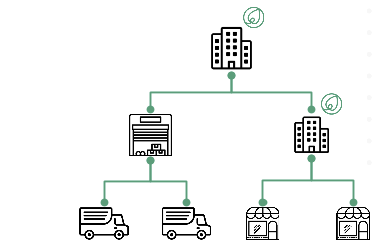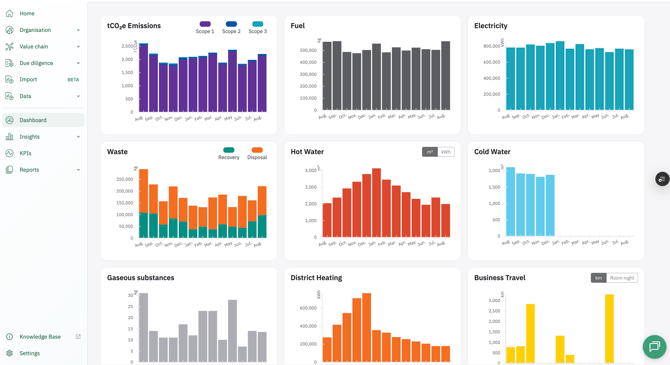Intro to Data: Your engine for lead Impact
How does Klappir define data?
Why is data fundamental?
How to manage data to achieve your goals?

Data the common language we use to understand our operations, connect with stakeholders, and make informed decisions. By managing it well, we empower organizations to make smart strategic choices, build trust, transparency and accountability with stakeholders, and accelerate progress toward environmental goals.
Structured data is not just a reporting requirement; it is the engine for impact.
Why is data fundamental?
Data is more than just numbers on a spreadsheet – it is the common language that enables transparency, informed decision-making, stakeholder trust, and regulatory compliance. Without accurate, structured data, it is impossible to assess performance, track progress, or take meaningful action. In sustainability, data is the foundation for everything – from measuring carbon footprints and conducting social or governance assessments, to strengthening supply chains and achieving sustainability targets.
How does Klappir define data?
At its core, data refers to the factual, raw information – quantitative or qualitative – that we use to measure, track, report and communicate anything. In the context of sustainability and emissions accounting, data is the facts and figures capturing everything that results directly or indirectly from your own activities and operations – at your company level and across your organization's entire value chain.
For example, data might include the liters of diesel your delivery trucks consume each month (Scope 1), the kilowatt-hours of electricity used in your office buildings (Scope 2), or the amount of raw material purchased from a supplier and shipped across the globe (Scope 3). Each of these data points forms part of the overall picture of your environmental impact. Read more about the emissions scopes
How to manage data to achieve your goals?
To turn raw data into actionable insight, we must organize and manage it with intention.
By structuring data within a framework like the Greenhouse Gas (GHG) Protocol, we ensure it is consistent, comparable, and meaningful. Klappir adopts the GHG Protocol's methodology because it is the most widely used and recognized international accounting standard for governments and businesses to understand, quantify, and manage greenhouse gas emissions.
Klappir’s Sustainability Platform implements the GHG Protocol in a smart, user-focused way – guiding organizations step by step to manage their data with confidence and ultimately achieve their sustainability goals.
How your data is managed in Klappir's Sustainability Platform:
At the heart of every sustainability effort is a clear understanding of where emissions come from. Your data becomes truly powerful when each emission is tied to a specific activity, entity and supplier. Mapping these connections in Klappir's Sustainability Platform forms the bedrock to build clarity, control, and context.
1. Start by reviewing and filling in your Impact Profile in Organization>Impact Profile – it represents the sustainability Passport ID of your legal entities (i.e., your organizations). Then, add your emission sources as Assets (such as ships, buildings, and vehicles) in My Assets, and list your suppliers in Value chain> My value chain to prepare for value chain data integration.

2. Import data (diesel use, electricity use) using our Import tool. Note: Data quality standards encourage you to tie all emissions to their sources (assets).
3. Need to delete data? Access your data imports in Data>Previous imports in your functional tools. There you can view your imports and delete them as needed.
4. Visualize and analyze your data in your Dashboard, Insights and KPIs.
5. Perform due diligence on the data gathered by your organization and its value chain. ESG due diligence relies on accurate and verifiable data to identify risks and opportunities across an organization's value chain. In the Due Diligence feature, you can send and receive standardized surveys to gather ESG data directly from partners and suppliers.

From Data to Impact
This level of structured data management does not just support reporting, it drives real sustainable business value and resilience. Sustainability data management enables organizations to identify inefficiencies, reduce costs, track progress against targets, and take strategic steps to decarbonize. Ultimately, as an organization, understanding your data and knowing where you are in your company's sustainability journey is the foundation to unlocking harmonious, auditable and relatable sustainability impact – for your own organization and its ecosystem.